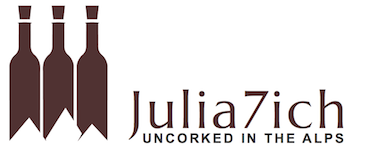The stately main Yalumba building clad in blue stone from the Angaston Marble Quarry is just opposite my current home at Percy’s. The pretty clock tower reaches cheerfully towards the turquoise South Australian sky. Kirsty Gosse arrives at 9 AM to introduce me for my first official day at Yalumba. After a little over a week of cloudy weather with occasional rain showers, the temperatures remain a cool 16°C. The lawns are still damp, so we keep to the brick pathways that lead to the Yalumba headquarters.
Here I meet Brian Walsh, the Director of Winemaking, and his team of 12 winemakers. The young and competent Chief Winemaker, Louisa Rose, leads the team in each year’s master classes in which all winemakers participate. Today we taste the entire line-up of white wines. Yalumba has several series of wines and each of the twelve winemakers is responsible for specific wines or specific series of wines and presents these wines to his/her colleagues. Everything from flagship reserve wines to entry-level bag-in-box is tasted. Quality and suitability for its price point, market segment, and desired style is discussed for each wine.
 The discussion is critical and to the point – no pussy-footing allowed! Despite this, it remains very respectful and quite positive. Logically, things like oak, malolactic fermentation, alcohol, sugar and acid levels are discussed, but marketing themes are also included. For example, Yalumba not only produces a series of wines made from organically grown grapes, it also produces wines suitable for vegans. “For vegans,” you ask? Yes, indeed! What many consumers do not know is that in food and beverage production certain processing agents are often employed (often for stabilization purposes) that do not remain in the end product. Some of these processing agents are derived from animals. That includes things like albumin (from egg whites), isinglass (from fish bladders), casein (from milk) or gelatine. Wines that are suitable for vegans have not employed these processing agents. The Yalumba team of winemakers agreed that the food pairing suggestion of one of the vegan wines “to serve with fish” was probably not a well-chosen labelling scheme.
The discussion is critical and to the point – no pussy-footing allowed! Despite this, it remains very respectful and quite positive. Logically, things like oak, malolactic fermentation, alcohol, sugar and acid levels are discussed, but marketing themes are also included. For example, Yalumba not only produces a series of wines made from organically grown grapes, it also produces wines suitable for vegans. “For vegans,” you ask? Yes, indeed! What many consumers do not know is that in food and beverage production certain processing agents are often employed (often for stabilization purposes) that do not remain in the end product. Some of these processing agents are derived from animals. That includes things like albumin (from egg whites), isinglass (from fish bladders), casein (from milk) or gelatine. Wines that are suitable for vegans have not employed these processing agents. The Yalumba team of winemakers agreed that the food pairing suggestion of one of the vegan wines “to serve with fish” was probably not a well-chosen labelling scheme.  For each of the 45 wines we taste, there is a data sheet. After the name and region of each wine comes a single word which should be different for each wine in the Yalumba family and represent the essence of that wine. This is followed by a more extensive style and sensory description. The datasheet for each wine further includes all of the winemaking procedures from picking criteria and fruit processing to clarification, fermentation, fining, stabilization and maturation. Viticultural and oenological challenges and future plans that were discussed in the previous white wine master class summarized at the end.
For each of the 45 wines we taste, there is a data sheet. After the name and region of each wine comes a single word which should be different for each wine in the Yalumba family and represent the essence of that wine. This is followed by a more extensive style and sensory description. The datasheet for each wine further includes all of the winemaking procedures from picking criteria and fruit processing to clarification, fermentation, fining, stabilization and maturation. Viticultural and oenological challenges and future plans that were discussed in the previous white wine master class summarized at the end. The datasheet, the tasting, and the lively discussion with the winemakers are extremely valuable for my Master of Wine studies. There are often questions on the practical exams in which we must make conclusions on production procedures and link them to what we taste in the glass and follow with assessments of quality, longevity, and strategic market positioning.
The tasting is sorted according to variety. I soon discover that each flight begins with the premium wines and ends with the entry level categories. This is a rather merciless way to taste wines. Among experienced tasters, it is known that one is usually over-critical of the first wine in each category. On the other hand, a lesser wine always has difficulties after a wine that is by far its superior. Yalumba winemakers are not easy on themselves or their wines. It becomes clear that efforts for improvement and development are an inherent part of the Yalumba company culture.






